L.A. Recalculated at the Chicago Architecture Biennial
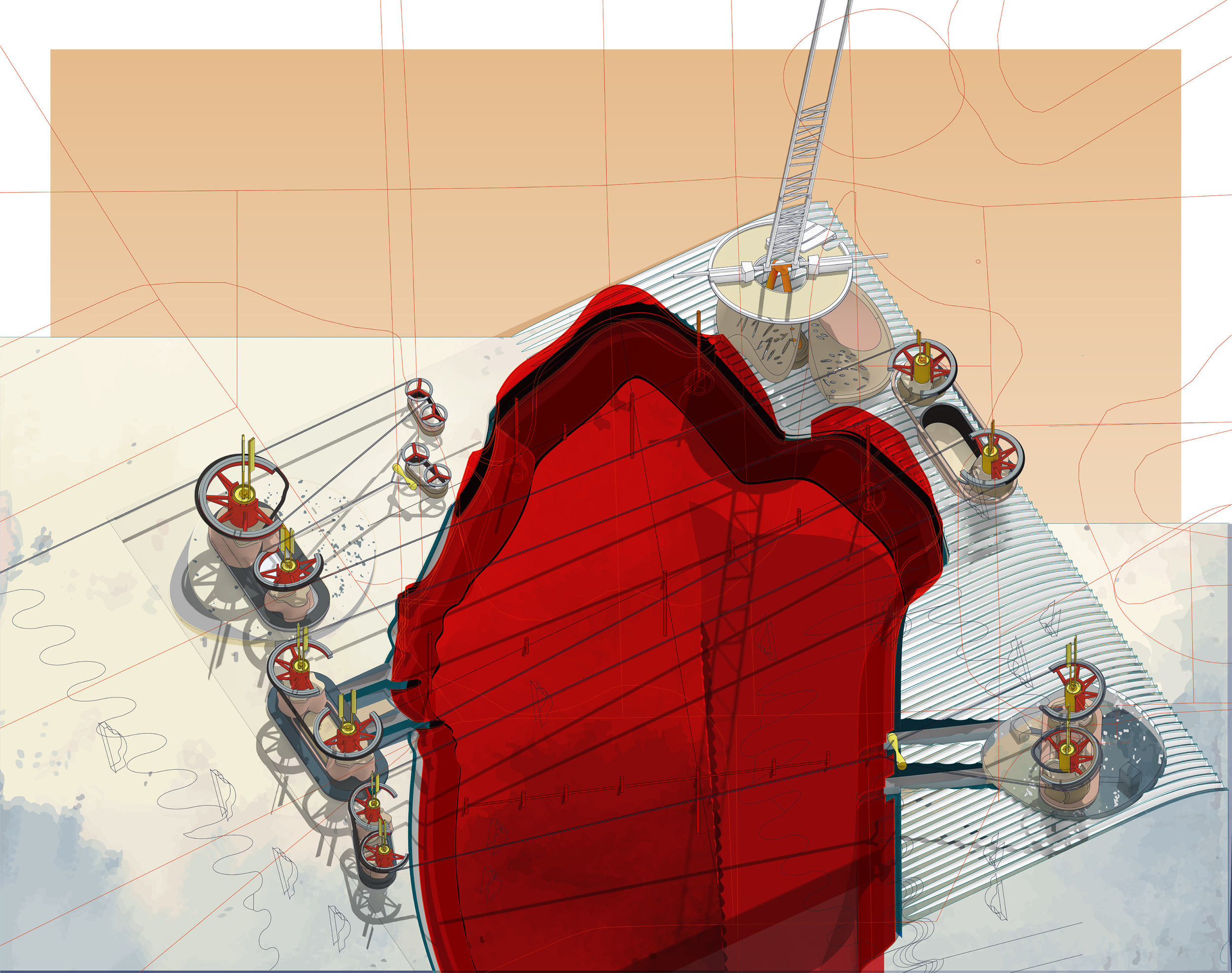
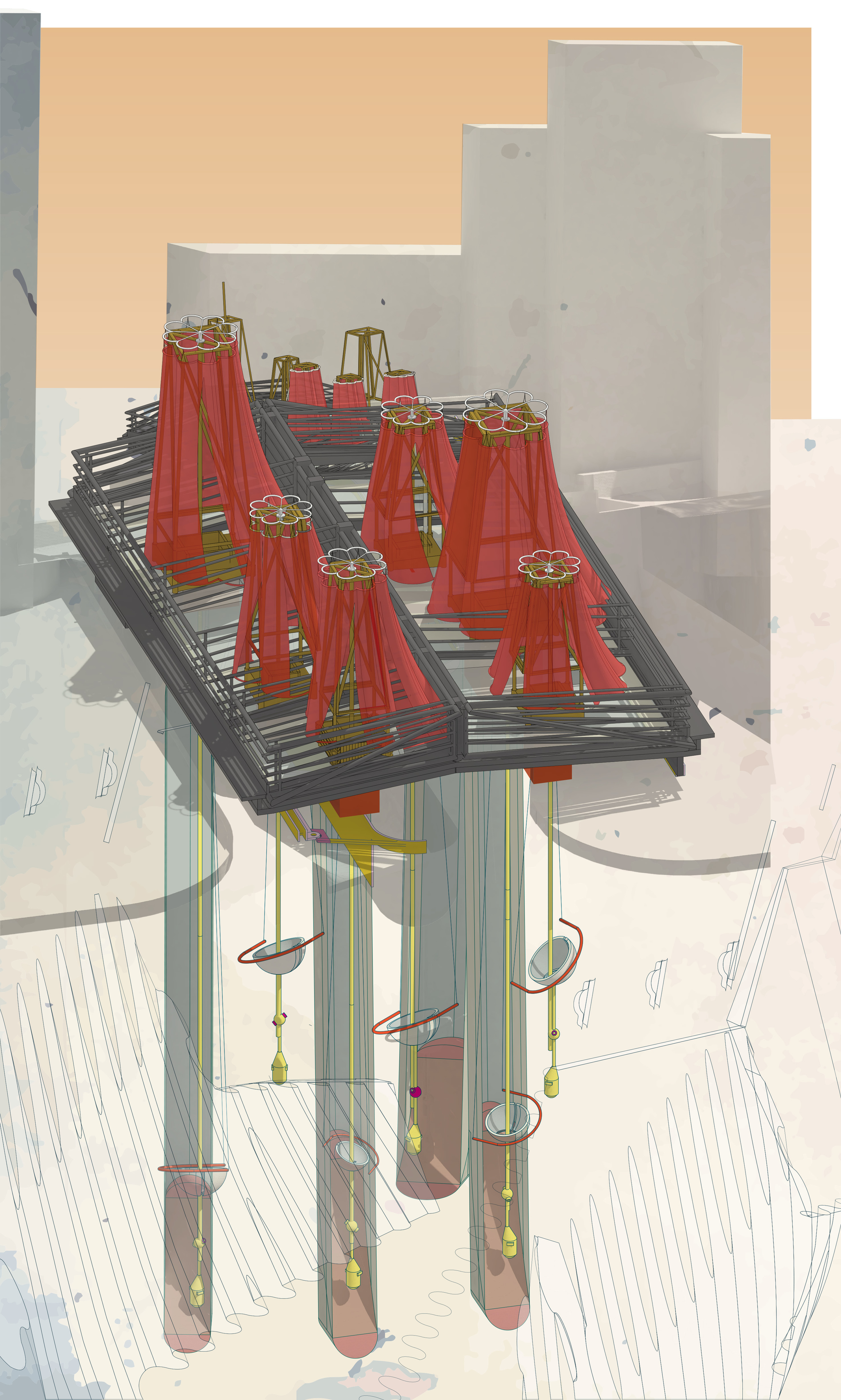
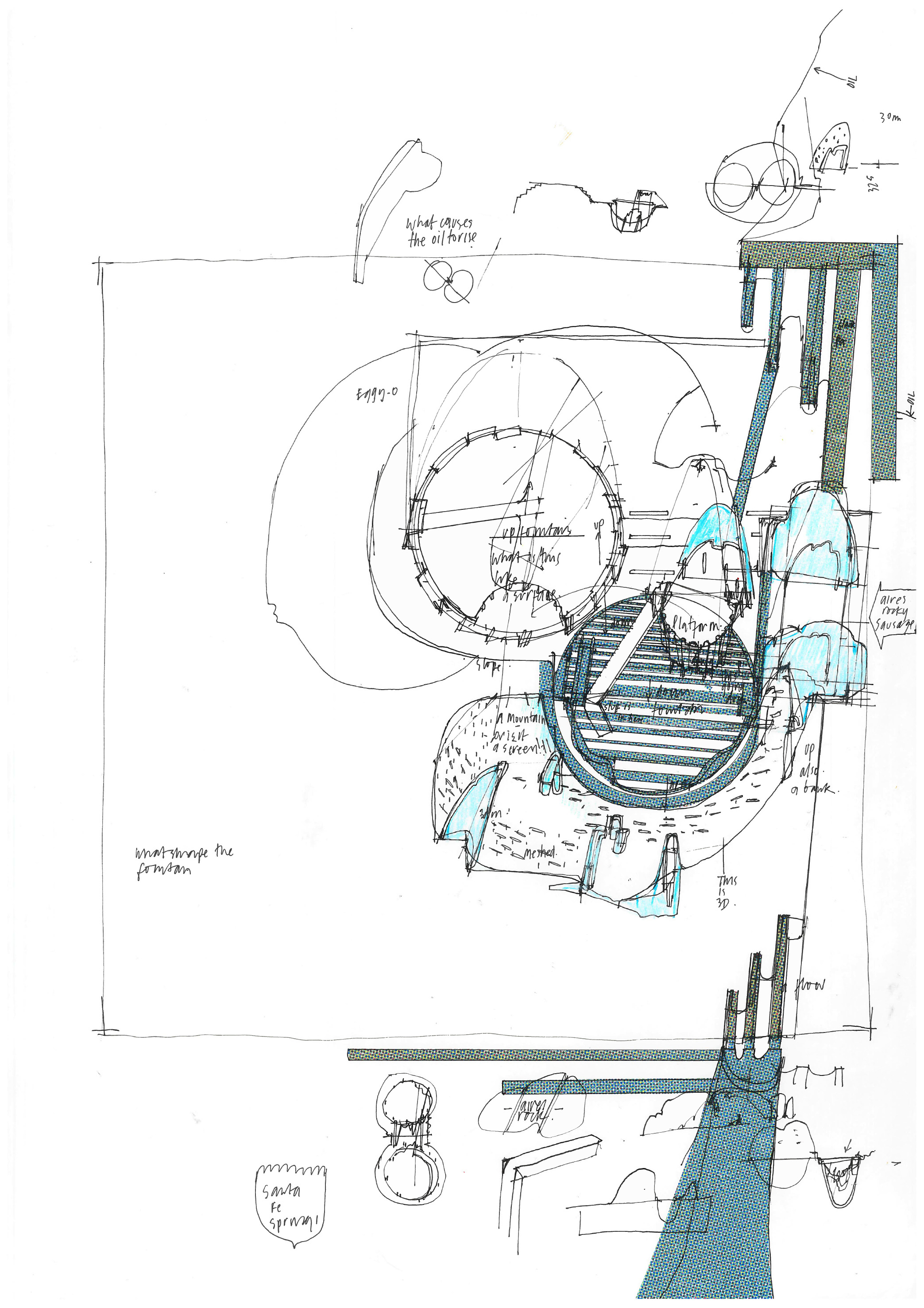
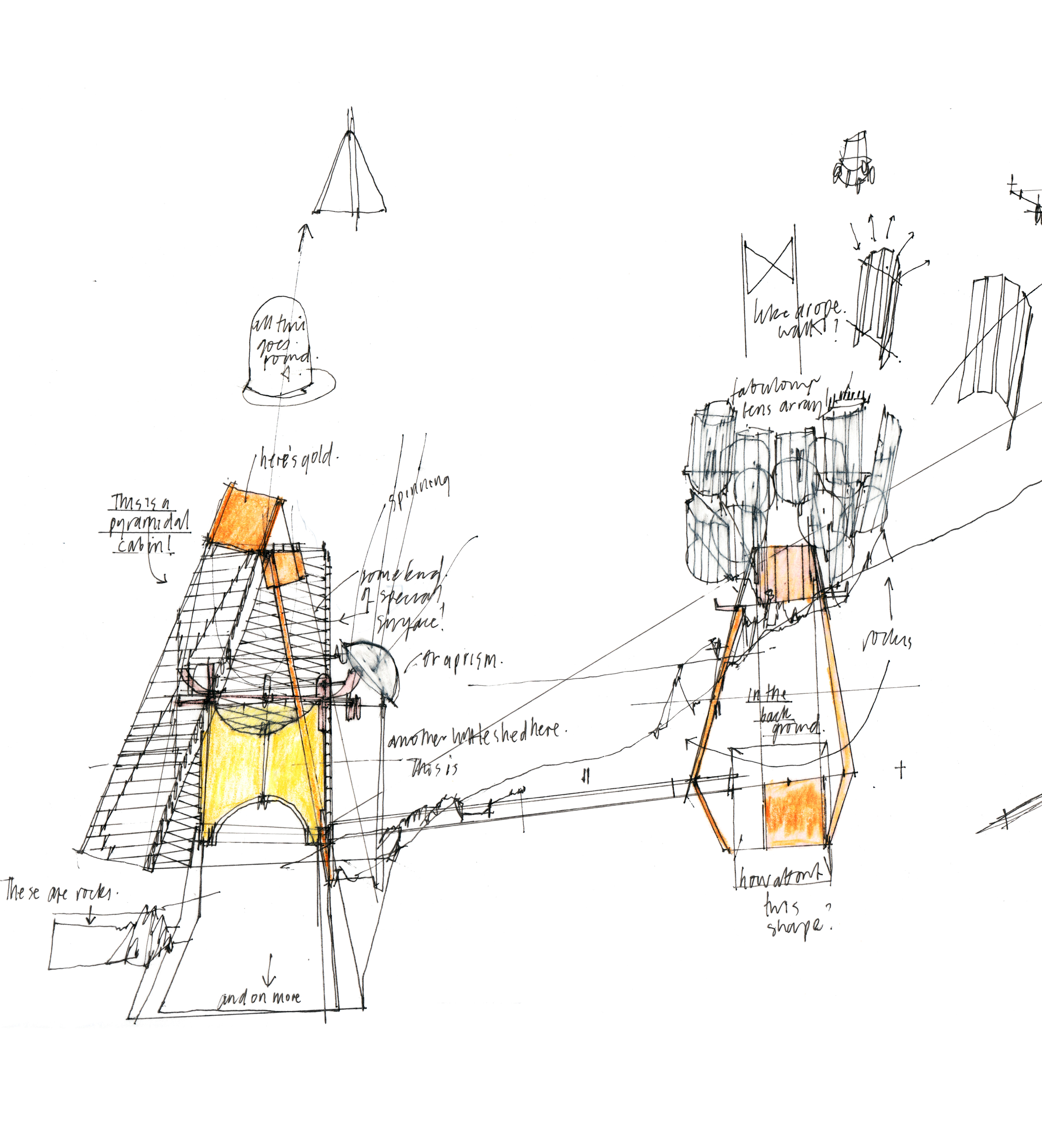
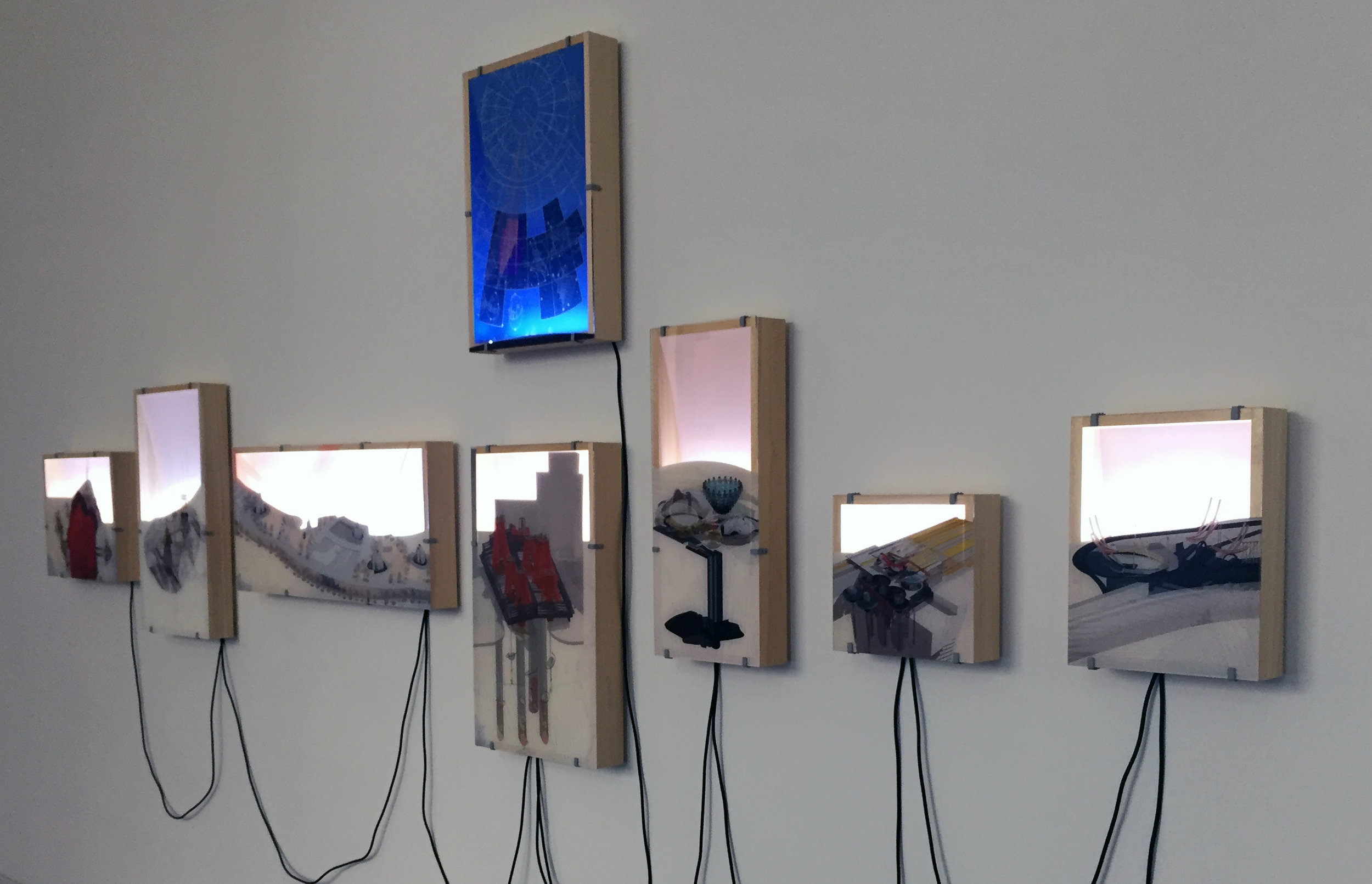
Biennial Hub, the Chicago Cultural Center
With Geoff Manaugh
Los Angeles is a city where natural history, aerospace research, astronomical observation, and the planetary sciences hold outsized urban influence. From the risk of catastrophic earthquakes to the region’s still- operational oil fields, from its long history of military aviation to its complex relationship with migratory wildlife, Los Angeles is not just a twenty- first- century megacity. Its ecological fragility combined with a dangerous lack of terrestrial stability mean that Los Angeles requires continual monitoring and study: from its buried creeks to its mountain summits, the city has been ornamented with scientific equipment, crowned with electromagnetic antennae, and ringed with seismic stations, transforming into an urban- scale research facility, a living device inhabited by millions of people on the continent’s westernmost edge. The cartographic drawing — part map, part plan, part deep section — takes conceptual inspiration from the book OneFiveFour by Lebbeus Woods. There, Woods describes a hypothetical city shaped by the existential threat of mysterious seismic events surging through the ground below it. In order to understand how this unstable ground might undermine the metropolis, the city has augmented itself on nearly every surface, Woods writes, with “oscilloscopes, refractors, seismometers, interferometers, and other, as yet unknown instruments, measuring light, movement, force, change.” In this city of instruments — this city as instrument—“tools for extending perceptivity to all scales of nature are built spontaneously, playfully, experimentally, continuously modified in home laboratories, in laboratories that are homes,” exploring the moving surface of an Earth in flux. Architecture becomes a means for giving shape to these existential investigations.
Twenty- first- century Los Angeles has inadvertently fulfilled Woods’s speculative vision. It is less a city, in some ways, than it is a matrix of seismic equipment and geological survey tools used for locating, mapping, and mitigating the effects of tectonic faults. This permanent flux and lack of anchorage makes Los Angeles bathymetric, rather than terrestrial. The city is also a graveyard of remnant physics experiments that once measured and established the speed of light, using prisms, mirrors, and interferometers in the San Gabriel Mountains (an experiment now marked by historic plaques and Piranesian obelisks). Los Angeles is also the host of the Griffith and Mt. Wilson Observatories, through which the city achieved its often overlooked but vital role in the history of global astronomy. Finally, the city incorporates a carefully studied nest of wildlife traps and ecological monitoring stations designed to track species other than human as they infiltrate, settle, and partially colonize the built environment. Seen through the lens of this expanded context, Los Angeles becomes an archipelago of scientific instruments often realized at the scale of urban infrastructure: densely inhabited, with one eye on the stars, sliding out of alignment with itself, and jostled from below with seismic tides.
